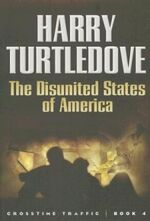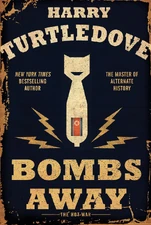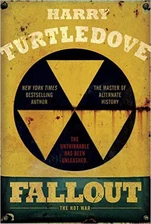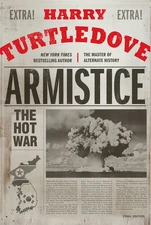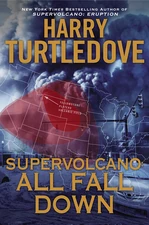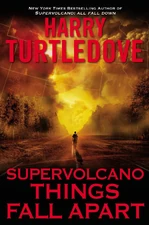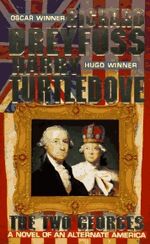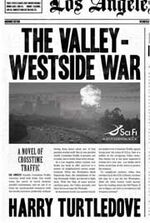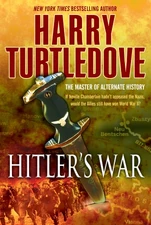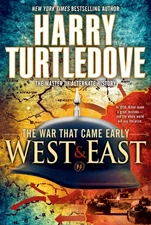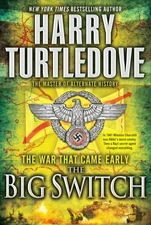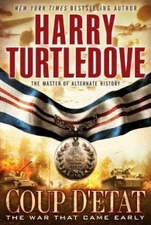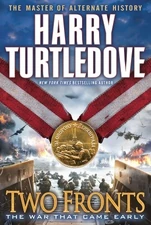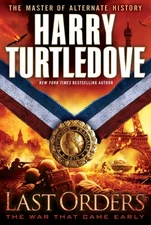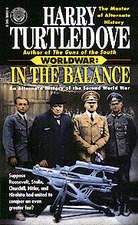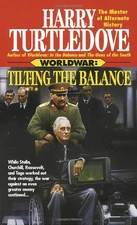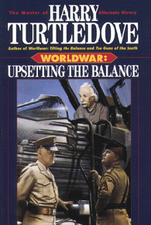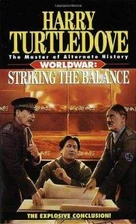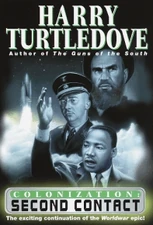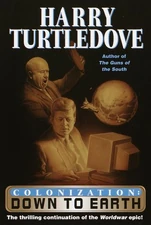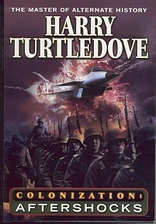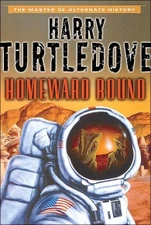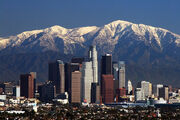
Los Angeles is the largest city in the state of California and the second largest in the United States. Los Angeles was founded on September 4, 1781, by Spanish governor Felipe de Neve. It became a part of Mexico in 1821 following the Mexican War of Independence. In 1848, at the end of the Mexican-American War, Los Angeles and the rest of California were purchased as part of the Treaty of Guadalupe Hidalgo, thereby becoming part of the United States. Los Angeles was incorporated as a municipality on April 4, 1850, five months before California achieved statehood.
Los Angeles in "The Barbecue, the Movie, & Other Unfortunately Not So Relevant Material"
Time traveling graduate student Lasoporp Rof sought to travel to the 13th-century Mongol Empire for research on his thesis about Genghis Khan. By mistake, he landed in late 20th century Los Angeles, which was just as mysterious, exotic, and shockingly primitive.
Los Angeles in The Case of the Toxic Spell Dump
Angels City was a large metropolis in the Golden Province of the Confederated Provinces.
Los Angeles in Crosstime Traffic
Los Angeles in The Disunited States of America
Los Angeles was the home of the Royer family. Beckie Royer mentally compared and contrasted every town in Virginia to Los Angeles, and found each of them wanting.
Los Angeles in The Valley-Westside War
Los Angeles, like the rest of the world, was the target of full-scale nuclear warfare between the United States and the Soviet Union in 1967. By 2097, the people, bombed back into the Middle Ages, had formed tiny, fragmented kingdoms amid the ruins. The four main kingdoms of the area were Westside, The Valley, Speedro, and "beautiful, downtown Burbank".
This alternate was one where Crosstime Traffic had not determined the break-point, and they wondered who had launched an atomic bomb first. The Mendoza family received a research grant from UCLA to figure this out. Liz Mendoza spent time studying in the ruins of the alternate UCLA library, an activity that was interrupted by the Valley-Westside War of 2097.
Los Angeles in "Getting Real"
Los Angeles, like the rest of the United States, had been in economic decline for most of the 21st century. By 2117 much of its infrastructure had deteriorated with roads and sidewalks in poor shape. While some services such as police and electric distribution continued to function after a fashion, it was definitely poor throughout with criminal gangs in control. Transportation was primarily by foot, bicycle or pedicab with the occasional hydrogen- or electric-powered car.
During the Sino-American War of 2117 the Chinese staged a punitive raid on Los Angeles in retaliation for a U.S. attempted attack on Catalina Island, which had been taken over by the Chinese a generation earlier. They warned the residents to flee via avatars, then covered most of the city with what appeared to be a giant Pyrex bowl. What appeared to be lightning began causing random damage within the bowl.
Also, companies of conventionally armed soldiers entered the city. They left civilians alone unless they offered resistance. US soldiers trapped within the bowl were allowed to surrender unless they too offered more than token resistance.
Los Angeles in "Half the Battle"
Ellay was a large region of SoCal. Ellay contained a variety of kingdoms and duchies, including Canoga and Pacoim.
Los Angeles in The Hot War
The Soviet Union successfully dropped two atom bombs on Los Angeles on the morning of March 2, 1951.[1] The first one hit a little south of downtown which leveled the city's heart, destroying City Hall, the downtown police station, and headquarters of various newspaper and magazine companies such as the Los Angeles Times, the Los Angeles Examiner, the Los Angeles Mirror and the Los Angeles Herald-Express. The bombing also heavily damaged the Los Angeles Memorial Coliseum. The other was used against the ports at San Pedro and Long Beach. The city did its best to adapt to the destruction and interruption in service.[2]
The surrounding areas, such as Glendale, were not directly harmed, and were able to plug along with almost no impact to their infrastructure.[3] In the aftermath, the federal government established a number of refugee camps around Los Angeles.[4]
Los Angeles in Household Gods
Nicole Gunther was a lawyer in Los Angeles and a divorced single mother. Tired of pollution, overpopulation and the sexism by her bosses, she began to tire of her life in modern Los Angeles. Due to her wish to the Roman gods Liber and Libera, she was transported to the ancient Roman city of Carnuntum. Life there made her miss and appreciate her home city like never before.
However, she reflected how neighbors in her city were often cold, unwilling to get involved with a person, in stark contrast to Carnuntum where people actually talked to each other and cared about each other. In fact, she thought nobody would have gotten involved even if she were getting raped.
Los Angeles in In the Presence of Mine Enemies
After German and Japanese forces defeated the United States in Third World War, the Reich's Einsatzkommandos massacred the Jewish, Negro, and homosexual populations of cities, including Los Angeles.[5][6]
Los Angeles in "The Lieutenant"
Depriver Jerry Daniels resided in Los Angeles.[7] His touch caused permanent loss of sexual arousal.[8] Not long after he manifested, a rogue faction of the Los Angeles Police Department led by Lt. Jason McNabb discovered Daniels and what he could do. So as to avoid being sent to a camp, Daniels agreed to work with McNabb's group to Deprive sex offenders.[9]
Los Angeles in Southern Victory
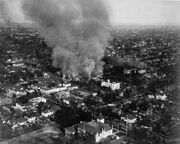
Los Angeles, 1932, in the immediate aftermath of the Japanese bombing raid that served as the climax of the Pacific War.
Los Angeles' population increased steadily in the late 1800s and early 1900s. It came under attack by the French Navy in the Second Mexican War of 1881. At the start of the Great War, the American Pacific Fleet sailed from Los Angeles, among other west ports, to take the Sandwich Islands from the British.[10]
Los Angeles was also bombed by the Japanese during the Pacific War. Japanese planes operating from two airplane carriers bombed the city while President Hosea Blackford was visiting on a campaign stop. The attack guaranteed Blackford's defeat in the 1932 election against Calvin Coolidge.
Between the end of the Pacific War and the beginning of the Second Great War, Los Angeles was also the scene of serious labor strife between radicalized construction workers and Pinkerton thugs hired to keep Los Angeles non-unionized. This unrest petered out after the beginning of the war, as the enlistment of many workers forced builders to implement wage hikes to keep those that remained from finding higher pay in new war plants. Los Angeles became a center for the aircraft industry due to its relative remoteness from Confederate air bases and of the movie industry because of its year-round good weather.
During the Second Great War, the Los Angeles area did suffer a nuisance raid in nearby Goleta when an unidentified submersible shelled a seaside oilfield. It also came under air attack, as did Denver and Las Vegas, in one of the diversionary air strikes launched by the CSA to shield the Hanford raid of early 1943.
Los Angeles in Supervolcano
About forty minutes after the Yellowstone Supervolcano erupted, Los Angeles was hit by mild earthquake which was felt as a gentle rolling motion that went on and on.[11] While the quake didn't do any damage, the region was dusted by volcanic ash. It was thick enough to turn all surfaces a cement grey including lawns. It was an immediate irritant to eyes and lungs.[12]
While the Los Angeles area was only mildly affected by the eruption, it was quickly noticeable that the weather was both cooler and wetter than it had been. During the first winter after the eruption, it snowed twice, something that hadn't happened in over 60 years.[13] Two years after the eruption, there were extensive gasoline shortages with prices skyrocketing, such that even car dependent L.A. had commuters switch to bicycles from their automobiles. While other crimes remained stable, the police departments in the region recorded an alarming increase in bicycle thefts.[14]
Los Angeles in The Two Georges
New Liverpool was the capital of the North American Union province of Upper California. Its original Spanish name, Los Angeles, was virtually forgotten. A former Holy Alliance city, it gained its present name after being conquered by British forces in one of the main battles of a 19th century war.[15]
New Liverpool had a considerable Nuevespañolan population. Unlike the restive Irish population in various parts of the North American Union, the Nuevespañolans in New Liverpool were in general content to live under the Union's rule, despite the proximity of the Holy Alliance border across which was a large population sharing their language and ethnic origin.
Due to the frequency of earthquakes in the area, they city had a building height limit of 12 stories.
It was in the city that the painting The Two Georges was stolen by the Sons of Liberty while on a tour stop in 1995. "Honest" Dick, the famous steamer salesman who made his business headquarters in New Liverpool, was murdered by the Sons as a distraction.
Los Angeles in The War That Came Early
Japan's success in spreading the plague and anthrax in Hawaii caused a panic on the United States West Coast, whose inhabitants feared the spread of deadly disease to them as well. The cities of Los Angeles and Oakland instituted Kill-a-Rat Days, assuming that with no rats, plague would not spread. The bodies of dead rats killed by citizens were displayed in big piles at the two cities. Pete McGill believed it was an illusion to assume rats and disease could be entirely eliminated in this way.[16]
Los Angeles in Worldwar
Los Angeles was a major west coast city in the US, and also the site of Hollywood, where nearly all motion pictures in the United States were made.
When the Race landed in mid 1942, the city of LA was left isolated from the whole war in general and it showed as the quality of newsreels dropped dramatically. It was unknown if the city ever fell during the early days of the invasion, but reports of the Army Air Force using dummy airfields just outside of the city was reported to have been attacked by the Race with dummy bombs.
When peace was declared in 1944, the city grew rapidly in the years following. Sam Yeager and other important people settled down there. A large community of Lizard expatriates also settled in the city, due to its warm climate and proximity to Race-held Mexico.
References
- ↑ Bombs Away, pg. 153-155.
- ↑ Ibid., pg. 167.
- ↑ Ibid., pgs. 153-155.
- ↑ See, e.g., Fallout, loc. 534, e-book.
- ↑ In the Presence of Mine Enemies, pg. 14
- ↑ Ibid., pg. 87, "the conquerors had worked their usual horrors on Jews and Negroes."
- ↑ The Touch, Patrick Merla, editor, pg. 165, TPB.
- ↑ Ibid., pg. 172.
- ↑ Ibid., pg. 167-172.
- ↑ American Front, pg. 59, HC.
- ↑ Eruption, pg. 173, HC.
- ↑ Ibid, pgs. 219-221.
- ↑ All Fall Down, pg. 2, HC.
- ↑ Ibid, pg. 143.
- ↑ The Two Georges, p. 19, HC. By 1995, it has been "a century and a third" since this happened.
- ↑ Two Fronts, pg. 347, HC
| |||||||||||||||||||||||||||||||||||||||||||||||||||||||||||||||||||||||||||||||||||||||||||||||||||||||||||||||||||||||||||||||||||||||||||||||||||||||||||||||||||||||||||||||||||||||||||||||||||||||||||||||||||||||||||||
